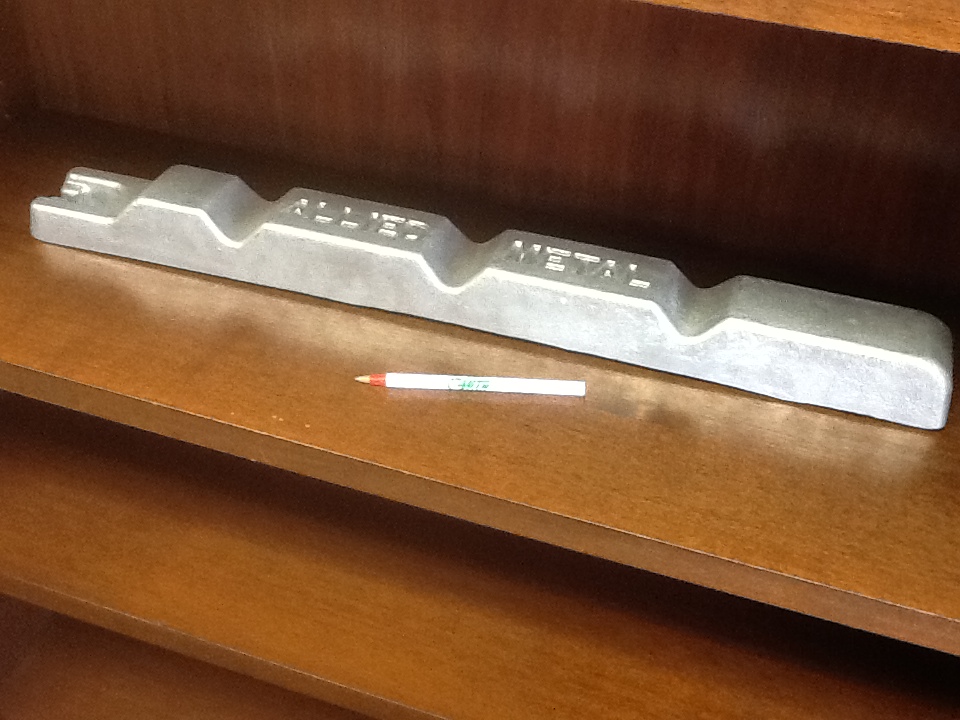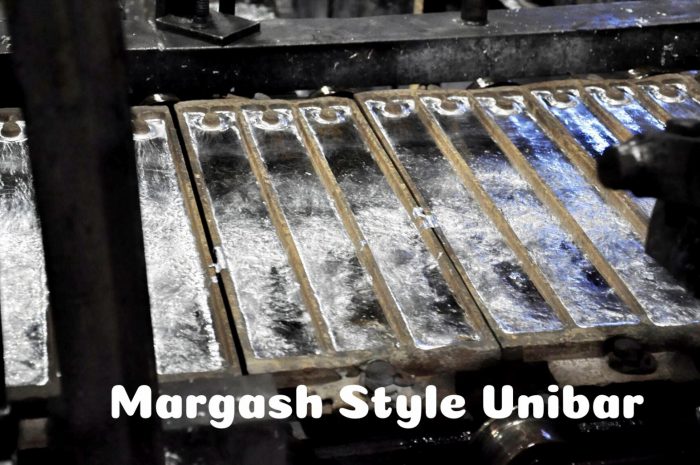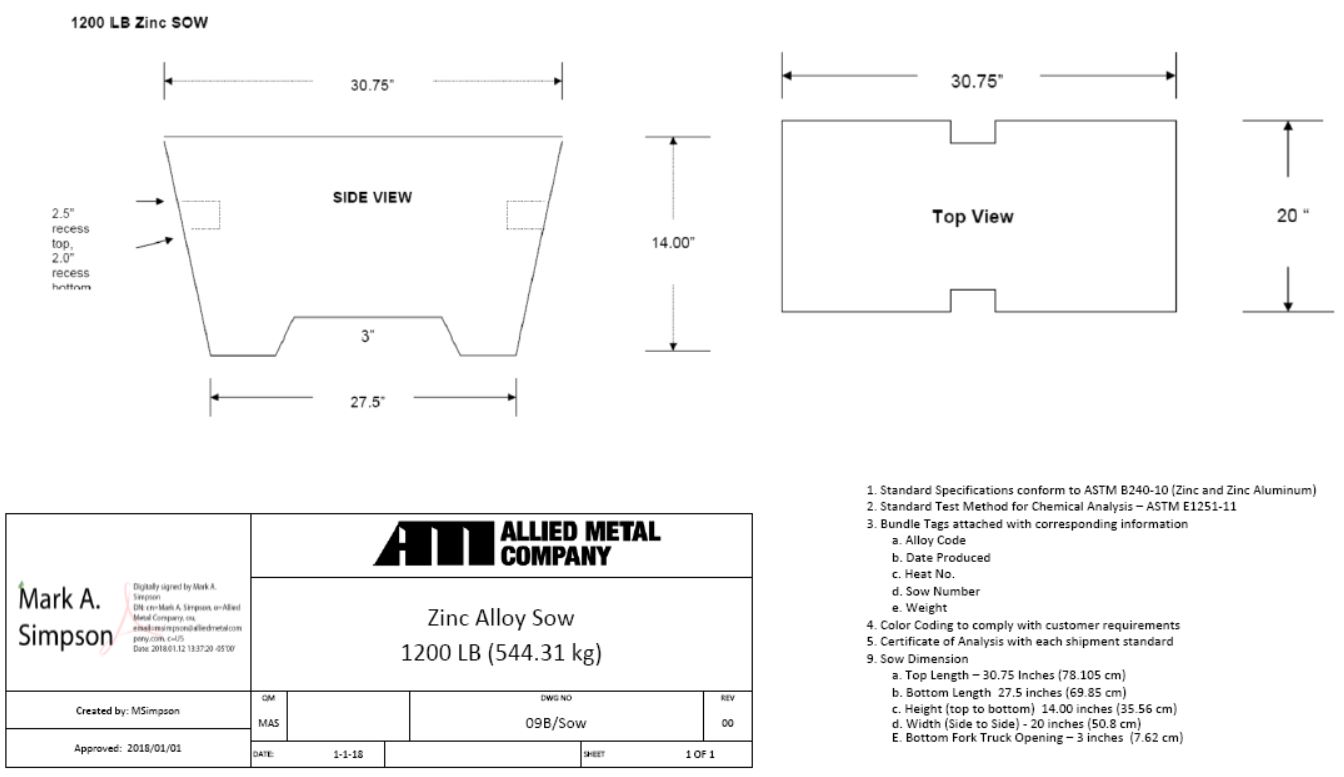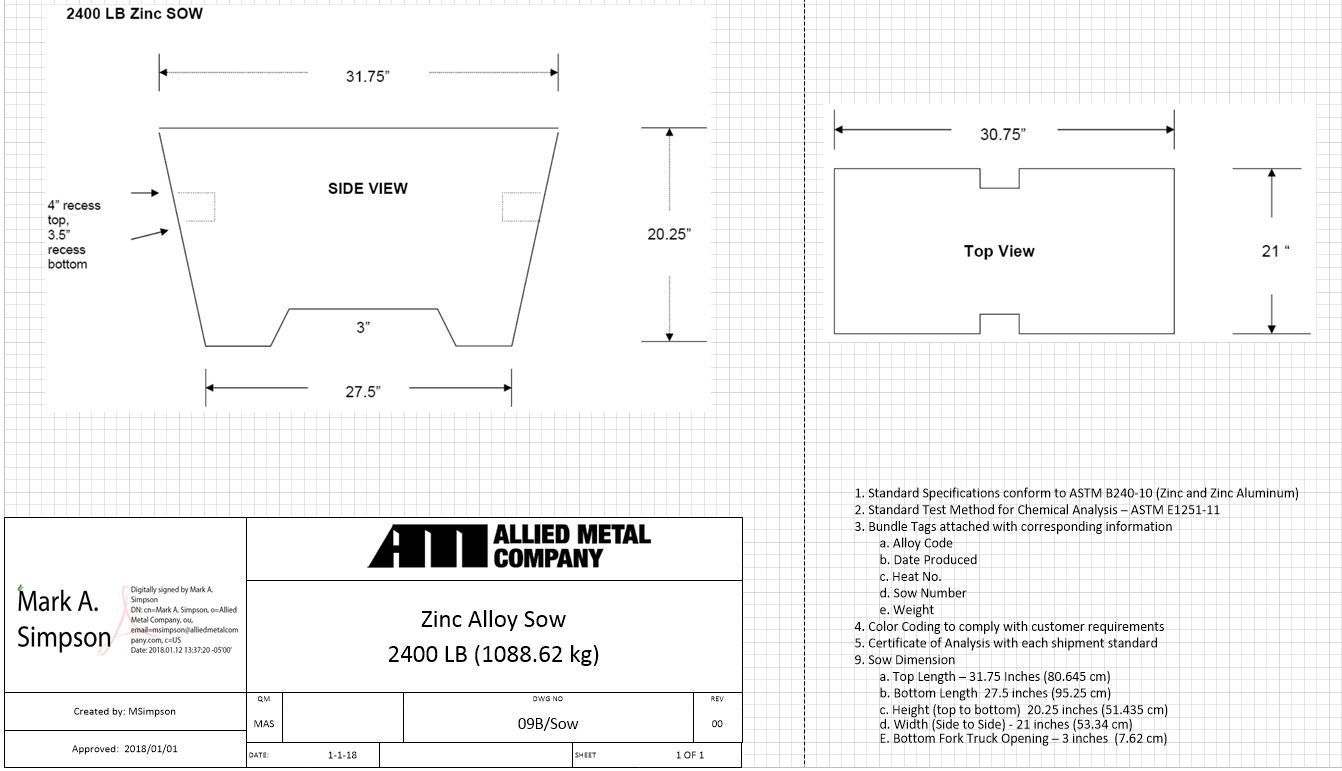


There are two basic families of zinc casting alloy. The conventional or ‘ZAMAK’ alloys are commonly named based on their sequential development, preceded by the word alloy. These include Alloy 2, Alloy 3, Alloy 5, and Alloy 7. Zinc alloys with higher amounts of aluminum than the conventional alloys use the prefix ZA followed by their approximate aluminum content. These include ZA-8, ZA-12 and ZA-27. ZA alloys offer higher strength, and useful bearing properties.
Several different systems of naming the two classes of zinc alloys have evolved along with them, as indicated in parenthesis next to the main alloy names below.
Major Alloy Characteristics
Alloy 3: (ZAMAK 3, ZP3, ZL3, ZP0400, ZnAl4, ZDC2)
Alloy 3 is the most widely used zinc alloy in North America. Its popularity is due to an excellent balance of desirable physical and mechanical properties, superb castability and long-term dimensional stability. No. 3 also offers excellent finishing characteristics for plating, painting and chromate treatments. It is the “standard” by which other zinc alloys are rated in terms of die casting.
Alloy 5: (ZAMAK 5, ZP5, ZL5, ZP0410, ZnAl4Cu1, ZDC1)
Alloy 5 is the most widely used zinc alloy in Europe. No. 5 has excellent castability characteristics and improved creep performance over No. 3. No. 5 castings are also marginally stronger and harder than No. 3, however, these improvements are accompanied by a reduction in ductility that can affect formability during secondary bending, riveting, swaging or crimping operations. No. 5 contains an addition of 1% copper which accounts for these property changes. When an extra measure of tensile performance is needed, No. 5 castings are recommended. The alloy is readily plated, finished and machined, comparable to No. 3 alloy.
Alloy 7: (ZAMAK 7, ZL7)
Alloy 7 is a modification of No 3 with a lower magnesium content and tighter impurities specification. This results in improved casting fluidity, ductility and surface finish, making the alloy popular where the die caster is making thin walled components requiring a good surface finish. However, several new high fluidity alloys have recently been developed with superior thin wall characteristics (see high fluidity alloy).
Alloy 2: (ZAMAK 2, ZP2, ZL2, ZP0430, ZnAl4Cu3, Kirksite)
Alloy 2 offers the highest strength and hardness of the conventional zinc alloys. The high copper content (3%) in No. 2 results in property changes upon long-term aging. These changes include slight dimensional growth, lower elongation and reduced impact performance (to levels similar to aluminum alloys) for die cast products. No. 2 alloy exhibits excellent castability and maintains higher strength and hardness levels after long term aging. No. 2 alloy is a good bearing material, and may eliminate bushings and wear inserts in die cast designs
ZA-8: (ZP8)
A good gravity casting alloy, ZA-8 can also be hot chamber die cast and is readily plated and finished using standard procedures for conventional zinc alloys. When the performance of Alloys No. 3 or No. 5 is in question, ZA-8 is often the die casting choice because of high strength and creep properties and efficient hot chamber castability.
ZA-12 is the best gravity casting alloy for sand, permanent mold and the graphite mold casting process. It is also a good (cold chamber) die casting alloy. ZA-12 often competes with ZA-27 for strength applications. An excellent bearing alloy, ZA-12 is also platable, although plating adhesion is reduced compared to the conventional zinc alloys.
ZA-27: (ZP27)
This is an exceptionally strong alloy with a reported yield strength of 380 MPa (55ksi). It is light, and has excellent bearing and wear performance. Like ZA-12, this is a cold chamber die casting alloy and additional care is needed to ensure a sound casting. ZA-27 is not recommended for plating. When brute strength or wear resistance properties are needed, ZA-27 has demonstrated excellent performance.
ACuZinc5:
Developed by General Motors, this alloy has improved tensile strength, hardness and creep performance compared to the conventional zinc alloys. ACuZinc5’s strength and hardness properties are comparable to ZA-12. Testing has also shown ACuZinc5 to have excellent wear characteristics. Although this alloy is a hot chamber die casting alloy, it is more difficult to die cast with a higher wear rate of the shot end components in the die casting machine.
For More Information on Zinc Die Casting, go to: http://diecasting.zinc.org/



2 inch diameter / 1 pound SHG Zinc Balls

Zinc Technical Data
“Right Mouse Click on Files to Open without Downloading”


